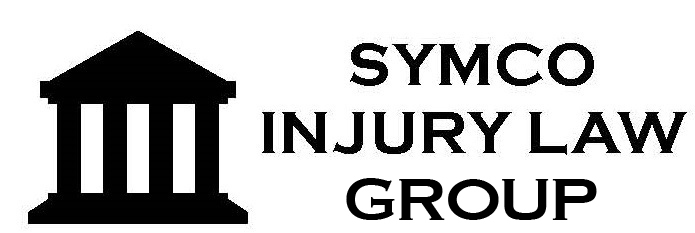What Are Key Auto Insurance Terms to Keep in Mind in 2023?

Auto Insurance Terms of Importance
What are Key Auto Insurance Terms to Keep in Mind in 2023?
A lot of us know the basics of auto insurance terms. We all know the state of Utah requires auto insurance for every operable vehicle. These common auto insurance terms below can usually help us through minor car accident situations. However, if an auto accident is complex or requires legal representation, there are other key auto insurance terms to keep in mind that can be very helpful and you should contact a lawyer to discuss your case. Let’s see what some of these basic auto insurance terms are below.
For more detailed information on all the terms we will speak of, please visit Utah Auto Insurance Terms Glossary. Some of these definitions are based on information from that website.
What are the Most Common Auto Insurance Terms I Should Know?
- Deductible – this is the amount you are responsible to pay if you are involved in an accident and your vehicle needs repairs.
- for ex: if your deductible is $1000, and the accident causes $5000 worth of damage. You are responsible to pay the $1000 and your auto insurance will cover the other $4,000.
- Premium – this is simply the cost of your auto insurance policy. This is usually paid monthly, semiannually or annually, and you have the option to choose the option that works better for you.
- Policy – this is the legal document you sign with your insurance company that explains and lists all the details of your coverage.
- Insured – this is you, the policy holder.
- Insurer – this is the auto insurance company, ie: Progressive, Geico, etc.
- Lapsed Policy – when your auto insurance policy is terminated due to it not being paid.
- If you decide to cancel your current insurance, it is a good idea to call the company to end the coverage.
- Claim – when you are involved in an auto accident, you will file a claim with your insurance and/or the other driver’s insurance company. In return, the insurance company may pay you an amount depending on the circumstances.
- The amount on the claim is dependent on many factors, including but not limited to the property damage and bodily injuries as a result of the accident.
- Claims Adjuster – an insurance company employee who handles the claims we spoke of above.
- Settlement – the settlement amount is the full payment you accept from an insurance companies for your loss and/or injury claims.
- Arbitration – if you disagree on the settlement amount with your own insurance company, an arbitrator, which is a third party, will examine all the details of the case presented by yourself and the insurance company and a decision is made on the final amount in certain situations.
Now, let’s dig deeper into specific auto insurance terms below.
What are Further Important Auto Insurance Terms you Should be Aware Of?
Like stated above, for more detailed information on all the terms we will continue to discuss, please visit Utah Auto Insurance Terms Glossary.
- PIP – Personal Injury Protection – this is a type of no fault coverage for auto insurance which provides coverage for medical expenses and income loss as a result of an auto accident.
- In the state of UTAH, this amount is a minimum of $3,000 for medical expenses.
- The no fault portion means, whether the accident is your fault or not, you will still be allowed to use this helpful benefit.
- Also important to note, once PIP is paid in full, then your health insurance kicks in and starts paying the rest of the medical bills, if applicable.
- For more detailed in formation on PIP and No Fault Coverage, check out another one of our blogs by clicking this link Symco Injury Law: What is No Fault Coverage?
- Liability Coverage – this is the part of your auto insurance that pays for losses to the other parties caused by you.
- From the perspective of the other parties, this is also known as: tortfeasor insurance, liability insurance, defendant’s insurance, third party insurance, and at-fault insurance.
- Utah code states the minimum amount is $25,000 per person, $65,000 per accident, or a $80,000 as a combined single limit. Usually it is written on your policy $25,000/$65,000.
- Bodily Injury Liability Coverage – this is liability coverage (above) but focused on the bodily injuries of other parties.
- Property Damage Liability – this is liability coverage as above as well, however, unlike bodily injury liability, this pays for damages to the other party’s vehicle or property damaged in an accident.
- buildings, house, fence poles, signs or trees.
- Umbrella Liability Insurance – this is coverage that is “above” your regular liability coverage.
- In order to buy this extra coverage, you must already carry a certain amount of liability coverage.
- This type of insurance is tapped into when you are sued for an amount higher than your basic automobile insurance policy limits.
- Underinsurance Motorist Coverage (UIM) – this is insurance for a bodily injury to you resulting from a car accident caused by another, when the other party has “insufficient” insurance coverage to fully compensate you for your injuries, hence the name underinsured insurance.
- Uninsured Motorist Coverage (UM) – this is also insurance that covers for your bodily injury from a car accident caused by another, if the other at-fault driver has NO insurance.
- ie: if a drunk driver hits you, and he has no insurance, this part of your own insurance policy that will cover you.
- Uninsured Motorist Property Damage (UMPD)– this covers damages to your automobile caused by an uninsured driver.
- This is applicable if you don’t have collision coverage below.
- Collision coverage – this part of your policy pays for your car’s damages caused by an accident with another vehicle, obstacle, or if your vehicle overturns.
- Comprehensive Coverage – this covers damages to your car or the total loss of your vehicle from any cause other than an auto accident.
- ie: theft, vandalism, fire, hail, snow storm, etc.
- Rental reimbursement/ coverage – an additional policy you can purchase that pays for your rental vehicle cost if your vehicle is not drivable and you need transportation.
- Total Loss – means you will be paid the value of your vehicle, rather than the insurance company fixing your vehicle, when repairing your vehicle is more expensive than what your vehicle is worth at the time of the accident.
We just discussed the most common terms that apply when dealing with an automobile accident, along with all the ins and outs of some terms that go into a personal injury/ car accident case. Please keep in mind this blog is not legal advice and is not to be relied on in making legal decisions, rather, this is an invitation to contact our office to discuss any possible case in more detail. These terms are not all inclusive and this is mean to be a simple guide to sometimes otherwise complex legal terms.
Here at Symco Injury Law Firm, we are legally trained and have over a decade of experience to guide you and assist you throughout the entire process of your case.
If you are involved in any car accident case that causes bodily harm to yourself or others, please don’t hesitate to call us or text us at 801-738-9999 or visit us via our website Symco Injury Law Contact Us. We also have a 24/7 chat box on our site as well for your convenience. And if you simply have any questions on anything discussed today, we are always happy to answer them.
Drive safe out there!
